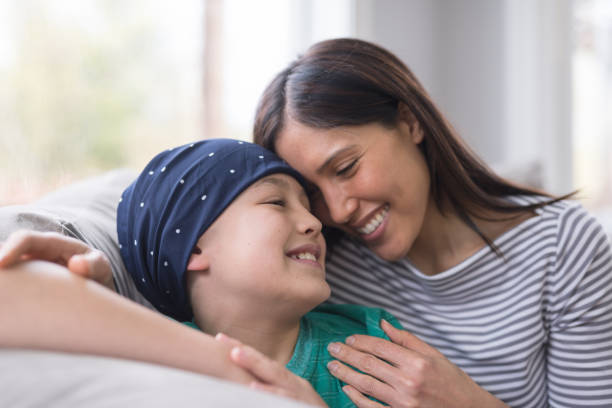World Cancer Day, a poignant annual event observed on February 4th, stands as a vital platform to spotlight the impact of cancer across all age groups. As we approach this significant day, our focus sharpens on a specific concern that requires urgent attention – cancer in children. This article aims to delve into the various facets of childhood cancers, their prevalence, and the global endeavors to address this critical issue.
World Cancer Day: A Rallying Cry for Action
World Cancer Day, themed “Close the care gap: uniting our voices and action” for 2024-2026, underscores the collective efforts needed in the prevention, detection, and treatment of cancer. While cancer in children is less common, it remains a substantial public health concern worldwide.
Cancer in Children: Unveiling the Distinct Challenge

Image from iStock
Approximately 400,000 children under the age of 19 receive a cancer diagnosis every year globally. The five most prevalent childhood cancers – Leukemia, Brain tumors, Lymphomas, Neuroblastomas, and Wilms’ tumors – demand our attention due to the unique challenges they present.
Types of Childhood Cancers
1. Leukemia
Leukemia, constituting 28% of childhood cancers, encompasses acute lymphocytic leukemia (ALL) and acute myeloid leukemia (AML). Recognizing symptoms like bone pain, fatigue, and bruising is crucial for timely intervention.
2. Brain and Spinal Cord Tumors
Comprising 26% of childhood cancers, these tumors present diverse challenges. Headaches, seizures, and trouble walking signal their presence, demanding careful diagnosis and tailored treatments.
3. Neuroblastoma
Neuroblastoma, accounting for 6% of childhood cancers, manifests in young children. Early detection is vital, given its propensity to cause swelling in the abdomen and other distressing symptoms.
4. Wilms Tumor
Occurring in 3 to 4-year-olds, Wilms tumor originates in the kidneys. Detecting symptoms like abdominal swelling is essential for addressing this cancer, which constitutes about 5% of childhood cases.
5. Lymphomas
Lymphomas, affecting immune system cells, comprise Hodgkin lymphoma (3% of childhood cancers) and non-Hodgkin lymphoma (5% of childhood cancers). Recognizing symptoms like swollen lymph nodes is crucial for early intervention.
6. Rhabdomyosarcoma
This cancer, arising from skeletal muscle cells, constitutes about 3% of childhood cancers. Pain or swelling in various body parts signals its presence, necessitating prompt attention.
7. Retinoblastoma
Affecting the eyes and making up 2% of childhood cancers, retinoblastoma is typically identified by changes in the appearance of a child’s eyes. Early detection is vital for effective management.
8. Bone Cancers
Primary bone cancers, comprising 3% of childhood cancers, predominantly affect older children and teens. Osteosarcoma and Ewing sarcoma present unique challenges, often characterized by bone pain and swelling.
World Cancer Day and Signs of Hope
As we mark World Cancer Day, the imperative is to raise awareness about childhood cancers and their distinctive signs. Timely recognition and intervention can significantly improve outcomes, offering hope to affected children and their families.
Understanding the nuances of cancer in children is paramount in the collective effort to combat this global health challenge. World Cancer Day provides an opportunity for reflection, education, and advocacy, ultimately contributing to a brighter future for the youngest warriors against cancer. Let us unite our voices and actions to create a world where no child has to battle cancer alone.
ALSO READ
5-Year-Old Almahyra’s Heart-Wrenching Battle with Blood Cancer
What You Need to Know About Breast Cancer
Ask an Expert Urologist: What to Know About Prostate Cancer